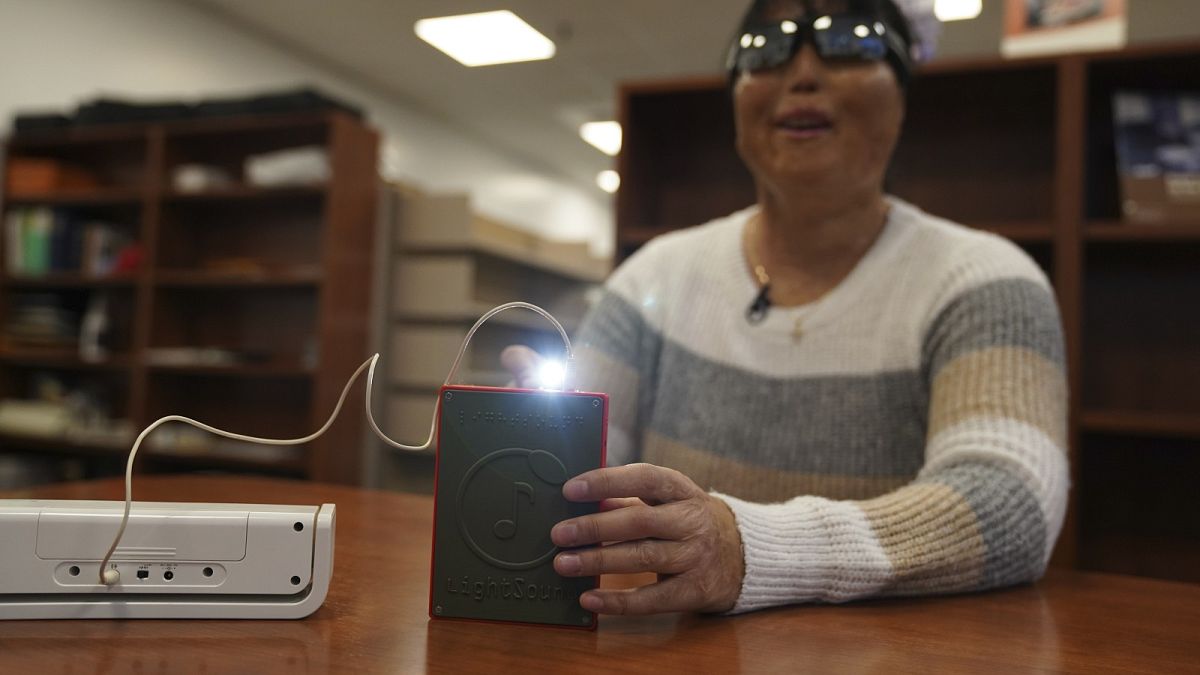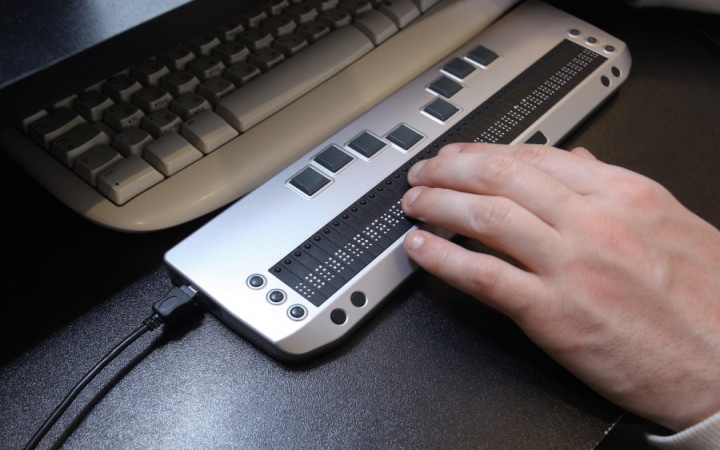Speech-to-Text Devices for Low Vision: Closing the Communication Gap
Enhancing Lives With Advanced Assistive Tools for the Blind
The combination of advanced assistive devices for the blind is transforming exactly how individuals experience their environments and connect with their areas. What does this evolution imply for the future of assistive innovation and its duty in equipping people?
Introduction of Assistive Gadgets
Assistive tools for the blind include a diverse series of technologies and tools created to improve freedom and boost the lifestyle for people with aesthetic problems. These tools accommodate different needs, from navigating and movement to communication and day-to-day task administration.
Among the primary classifications of assistive devices consists of mobility aids, such as white canes and guide dogs, which help users navigate their surroundings securely. Electronic travel aids, geared up with sensing units and audio comments, additionally play a considerable function in movement improvement.
In addition, tools that aid with everyday living activities, such as adaptive kitchen area tools, Braille labels, and chatting watches, encourage people to carry out jobs separately. Communication help, including display viewers and Braille screens, help with accessibility to info and allow individuals to engage efficiently with the electronic world.
In addition, low-tech options like amplifying glasses and large-print materials continue to be essential for several users. Collectively, these assistive gadgets offer not only as sensible devices but also as essential enablers of freedom, cultivating better engagement in a world that frequently prioritizes sighted experiences. Their integration into day-to-day live is important for promoting inclusivity and enhancing total wellness for those with visual disabilities.
Cutting-edge Technologies in operation
Development in modern technology has significantly transformed the landscape of devices available for individuals with aesthetic impairments. Amongst one of the most notable improvements are smart glasses integrated with enhanced reality, which offer real-time navigation help and object recognition. These gadgets utilize advanced video cameras and fabricated knowledge to supply auditory hints, improving the user's spatial awareness and autonomy.
In addition, mobile applications have actually arised as effective sources, enabling individuals to determine money, reviewed message out loud, and browse unfamiliar atmospheres via verbal guidelines. Tools such as Braille screens and refreshable Braille gadgets remain to progress, supplying smooth connection with computers and mobile phones, consequently improving communication and accessibility to info.
Wearable modern technology, consisting of smartwatches outfitted with voice-activated functions, additionally encourages customers by promoting quick access to notifications and notifies without requiring aesthetic involvement. Responsive maps and 3D printing are also acquiring traction, providing tangible depictions of rooms that help in orientation and wheelchair training.
Collectively, these cutting-edge modern technologies not just enhance the every day lives of visually damaged individuals however likewise foster greater freedom, inclusivity, and engagement with the more comprehensive area, thereby reshaping understandings of access. (Screen readers for the blind)
Personal Stories of Empowerment
Empowerment commonly arises from personal experiences that highlight the transformative influence of innovation on people with visual impairments. Take, for example, the story of Sarah, a young artist who regained her passion for painting via using a smart walking stick furnished with challenge detection. This tool not just promoted her wheelchair but instilled a newfound self-confidence, permitting her to navigate public areas independently and pursue her creative ventures.

These stories highlight the profound effects that progressed assistive devices can carry daily life. By enabling people to overcome obstacles, technology fosters a sense of freedom and self-worth. Such empowerment tales offer as a testament to the possibility of technology, highlighting how the right devices can significantly boost quality of life and open doors to new opportunities for those with visual problems.
Benefits of Advanced Solutions
The assimilation of sophisticated modern technology into assistive tools dramatically transforms day-to-day experiences for those impacted by vision loss. Voice-activated assistive devices. Instruments such as wise walking canes furnished with sensing units, navigating see it here applications, and wearable innovation are designed to give real-time comments, boosting spatial awareness and decreasing the risks connected with flexibility.
Additionally, advanced assistive innovations cultivate social addition by promoting interaction and interaction. Voice-activated tools and apps enable people to access info and involve with their surroundings independently, breaking obstacles that formerly impeded their participation in academic, expert, and social setups.
On top of that, the customization and flexibility of these services provide to the varied demands of customers, consequently boosting their overall lifestyle. Boosted capability, such as object recognition and text-to-speech abilities, encourages individuals with visual disabilities to execute tasks that they might have as soon as located testing. Inevitably, progressed assistive technologies not only improve freedom and safety and security but also advertise self-respect and self-respect, enabling users to lead fulfilling lives.
Future Fads in Assistive Technology
As technology remains to develop, the landscape of assistive gadgets for the blind is positioned for remarkable improvements that will certainly even more enhance access and freedom. Arising fads in assistive innovation show a change towards raised integration of expert system (AI) and equipment discovering, making it possible for tools to adjust to individual customer needs in real-time. These innovations are anticipated to promote even more user-friendly navigation systems that can recognize challenges and provide audio responses, dramatically improving outside wheelchair.
Furthermore, the advancement of wearable tech, such as smart glasses geared up with increased truth, will allow customers to receive contextual details regarding their surroundings, thereby improving their contact exam cost spatial understanding. Advancements in haptic modern technology pledge to produce responsive feedback tools, enabling users to regard information with touch, boosting discovering and communication with their environment.
Telecommunication breakthroughs are also leading the way for remote support solutions, where skilled specialists can offer advice through video clip telephone calls, guaranteeing support is conveniently accessible. As these patterns unravel, the future of assistive gadgets for the blind will most certainly foster higher freedom, equipping people to navigate their world with confidence and simplicity.

Final Thought
The Resources combination of innovative assistive gadgets for the blind stands for a significant advancement in cultivating freedom and improving quality of life. By using innovative innovations, these gadgets equip users to navigate their atmospheres with higher self-confidence and autonomy. As the field remains to develop, recurring research and advancement will likely produce also a lot more innovative remedies, additionally changing the lived experiences of people with aesthetic impairments and promoting a higher feeling of addition within culture.
The integration of innovative assistive tools for the blind is transforming just how people experience their surroundings and communicate with their neighborhoods. The integration of sophisticated innovation into assistive gadgets significantly changes daily experiences for those influenced by vision loss.As modern technology continues to develop, the landscape of assistive devices for the blind is positioned for exceptional innovations that will certainly even more boost access and independence. Arising trends in assistive modern technology indicate a change towards enhanced combination of artificial intelligence (AI) and equipment discovering, allowing devices to adapt to individual user requires in real-time.The assimilation of innovative assistive gadgets for the blind stands for a considerable improvement in promoting freedom and enhancing quality of life.